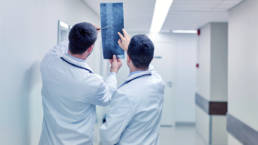How to Treat Sciatica Pain
Sciatica is a common issue in many individuals, from sporting and active individuals to even the elderly. As the term is becoming more popular in the allied health and sporting community in Perth, it is important for patients to understand what sciatica really is.
Firstly sciatica itself is not a medical condition, it is a collection of signs and symptoms. These signs and symptoms can usually be on occasion, frequent, constant or even disabling in some cases.
Sciatica usually presents itself as some or all of the following:
- Pain in lower back, legs or outer thigh (can be in both legs, however its usually only in one).
- Pain leading all the way from the lower back to the foot.
- Associated tingling and numbness with the pain.
- Burning sensation in the areas associated.
- Weakness in the lower limb.
Note that a dull ache is usually not present, but may arise secondarily.

Sciatica’s impact on the body.
As sciatica is not a medical condition in itself, it usually appears secondary to other conditions and impairments.
These conditions may be:
- degenerative discs,
- herniated discs,
- spinal stenosis,
- sacroiliac joint dysfunction,
- spondylolisthesis,
- spinal foramina narrowing,
- scar tissue, infections,
- malignant growths,
- piriformis syndrome etc.
The sciatic nerve originates from the lower back (Levels L 4-S3) and courses through the hips and down the legs. The main nerve splits into many other smaller nerves that help with the function of the lower limb. The symptoms that come with sciatica typically originates from the segment of the nerve that is being impinged or irritated. A degenerative spinal segment may cause irritation in the nerve or even tight musculature in the lateral hip rotators (piriformis in particular) can irritate the nerve.
Most sciatica cases are not dangerous and nerve damage is rare. When severe, sciatica can be disabling and can also cause bowel and bladder disturbances. In the most severe cases where Physiotherapy is unable to provide aid, medical intervention may become necessary.
Get professional help from a Perth physiotherapist, chiropractor or any other qualified healthcare professional to obtain an accurate sciatica diagnosis.
For Sciatica treatment Call our friendly staff at (08) 9321 1964
Related Posts
Magnesium Deficiency in Athletes
27 February 2018
At Perth Wellness Centre, we treat many athletes from various sporting disciplines. Common complaints from these athletes are that they suffer from cramps, spasms, and general weakness. All these signs point to our athletes suffering from a magnesium deficiency.
0 Comments2 Minutes
Bones are Living Tissues
31 October 2016
When it comes to bones, patients regularly have the image of ‘steel rods’ or ‘concrete pillars’ used to support the body and allow muscles to attach to. Fact is, the bones in our body are in constant change all the time. Bones are always undergoing remodeling and repair.
0 Comments3 Minutes


